How to Address Frequently Asked Questions About Coffee
Coffee is more than just a beverage; it's a ritual, a culture, and for many, an essential part of daily life. As coffee enthusiasts increasingly seek to deepen their understanding and appreciation of this beloved drink, questions inevitably arise. Addressing these frequently asked questions about coffee is essential for both novice brewers and seasoned aficionados alike. This article aims to provide comprehensive answers to common inquiries, focusing particularly on pour-over coffee, while also offering valuable coffee brewing tips.
The Basics of Coffee: Common Questions Answered
Understanding the basics of coffee is crucial for anyone looking to elevate their brewing experience. Here, we explore some of the most frequently asked questions about coffee that lay the foundation for a deeper appreciation.
What Type of Coffee Beans Should I Use?
The choice of coffee beans significantly influences the flavor and aroma of the final brew. Here are some essential considerations:
-
Origin: Coffee beans are categorized into two main types: Arabica and Robusta. Arabica beans are known for their smooth, nuanced flavors, while Robusta tends to be stronger and more bitter.
-
Freshness: Always opt for freshly roasted beans. Coffee loses its flavor over time, so purchasing from a reputable roaster who offers recent roasts is advisable.
-
Grind Size: The grind size should match your brewing method. For pour-over, a medium grind is typically recommended, as it allows for optimal extraction.
How Should I Store Coffee Beans?
Proper storage of coffee beans is vital to maintain their freshness. Here are some practical tips:
-
Airtight Containers: Store coffee in an airtight container to prevent exposure to air, which can cause staleness.
-
Cool, Dark Places: Keep the container in a cool, dark place, away from direct sunlight and heat sources. A pantry or cupboard is ideal.
-
Avoid Refrigeration: Contrary to popular belief, refrigerating coffee beans can introduce moisture and lead to flavor degradation.
What is the Best Water Temperature for Brewing Coffee?
Water temperature plays a critical role in coffee extraction. The ideal range for brewing coffee is between 195°F to 205°F. Using water that is too hot can lead to over-extraction, resulting in a bitter taste, while water that is too cool may under-extract and yield a weak flavor. A reliable thermometer can help ensure you maintain the appropriate temperature.

Pour-Over Coffee: Top Questions Addressed
Pour-over coffee has gained popularity due to its ability to produce a clean and flavorful cup. Below are some of the most frequently asked questions about this brewing method.
What Equipment Do I Need for Pour-Over Coffee?
To get started with pour-over coffee, you will need specific equipment:
-
Pour-Over Brewer: Common options include the Hario V60, Chemex, or Kalita Wave.
-
Coffee Scale: A scale helps measure the coffee and water accurately, which is crucial for consistency.
-
Gooseneck Kettle: This type of kettle allows for better control over the water flow and pouring technique.
-
Filters: Depending on your brewer, you'll need either paper or metal filters.
How Much Coffee Should I Use?
The coffee-to-water ratio is essential for achieving the perfect brew. A standard recommendation is:
-
Ratio: Use one part coffee to 15 to 17 parts water. For example, if you're brewing 300 grams of water, you should use between 18 to 20 grams of coffee.
-
Adjusting Strength: Feel free to adjust the ratio based on personal preference. If you prefer a stronger cup, increase the coffee amount slightly.
What is the Ideal Brewing Time for Pour-Over Coffee?
The brewing time for pour-over coffee typically ranges from two to four minutes. Factors influencing this time include:
-
Grind Size: Finer grinds may extract faster, while coarser grinds will take longer.
-
Pour Technique: The way you pour water can affect the brewing time. A steady, circular pour tends to yield better results.
Common Misconceptions About Coffee
As coffee culture continues to evolve, several misconceptions persist. Addressing these can help coffee lovers avoid mistakes and enhance their brewing experience.
Myth: Dark Roast Coffee is Stronger
Many people assume that dark roast coffee is stronger due to its bold flavor. However, caffeine content is primarily determined by the type of bean and the brewing method, not the roast level. Light roasts often contain slightly more caffeine than dark roasts because the roasting process reduces caffeine levels.
Myth: Coffee Should Be Brewed with Boiling Water
Another common misconception is that coffee should be brewed with boiling water. While it may seem logical, brewing with water that is too hot can lead to bitter flavors. Maintaining the ideal temperature range is vital for achieving a well-balanced cup.
Myth: Coffee is Dehydrating
The belief that coffee is dehydrating stems from its caffeine content. While caffeine is a diuretic, studies have shown that moderate coffee consumption does not lead to dehydration. In fact, coffee can contribute to daily fluid intake, making it a valuable part of a balanced diet.
Troubleshooting Common Coffee Brewing Issues
Even seasoned brewers can encounter problems. Here are some common issues and how to address them.
Problem: Bitter Coffee
Bitter coffee is often a result of over-extraction. To mitigate this issue:
-
Adjust Grind Size: Use a coarser grind to prevent over-extraction.
-
Monitor Brewing Time: Reduce the brewing time to avoid bitter notes.
Problem: Weak Coffee
If your coffee lacks flavor, it could be under-extracted. Here are some solutions:
-
Increase Coffee Amount: Use a higher coffee-to-water ratio.
-
Check Grind Size: A finer grind can help improve extraction.
Problem: Inconsistent Brew
Inconsistencies can arise from various factors, including uneven coffee grounds or water distribution. To achieve more uniform results:
-
Use a Scale: Measure both coffee and water accurately.
-
Practice Pour Technique: Focus on a steady, circular pour to ensure even saturation.
The Role of Quality Equipment in Brewing
Investing in quality brewing equipment can significantly enhance your coffee experience. Here are some aspects to consider:
Why Choose a Good Grinder?
A high-quality grinder is essential for consistent grind size, which directly impacts extraction. Burr grinders are preferred over blade grinders as they provide uniformity and control.
The Importance of a Reliable Kettle
A gooseneck kettle allows for precision pouring, essential for pour-over methods. The ability to control water flow and direction leads to better extraction and flavor development.
The Intersection of Quality and Convenience in Coffee
If you are passionate about coffee and seek to deepen your knowledge, consider exploring Ratio Coffee's offerings. Whether you are looking for state-of-the-art brewers or accessories that enhance your brewing ritual, Ratio Coffee provides the tools you need. Visit our website or reach out to us for more information on how we can help you master the art of coffee brewing.
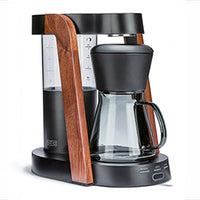 Ratio Eight S2
Ratio Eight S2
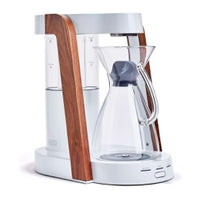 Ratio Eight Original
Ratio Eight Original
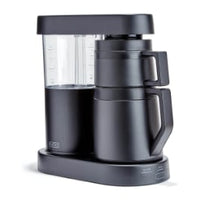 Ratio Six
Ratio Six
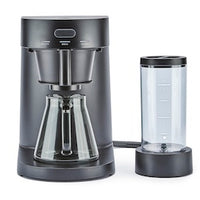 Ratio Four
Ratio Four
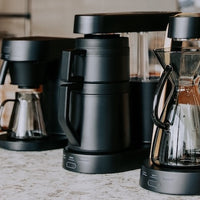 Compare Machines
Compare Machines






